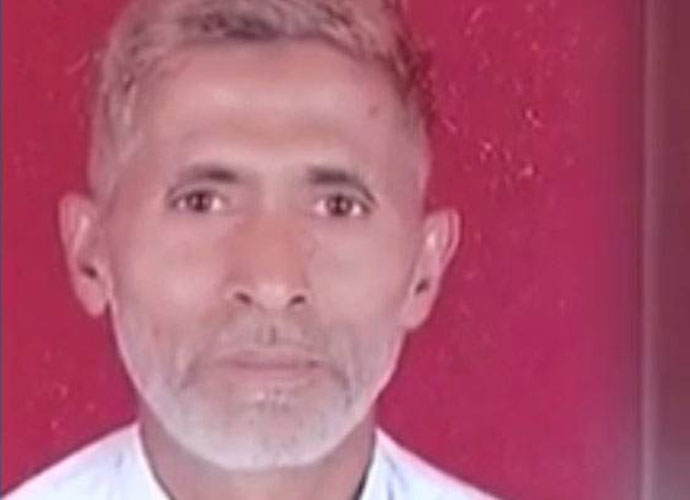In which Modi must we trust?

When he was the chief minister of Gujarat, we knew he was at times the Vikas Purush though he became the iconic leader that he is because of the persona of Hindu Hriday Samrat.
The Janus-faced leader that he always was, like most Sangh Parivar leaders, Modi has in the past 27 months added several variants of the two faces.
In Gujarat, while chanting the development mantra, Modi did not have to be apologetic about the advocacy of hardline Hindutva.
But as PM, the office imposes limitations and makes it necessary to adhere to certain norms. There is a different audience that Modi has to address outside India or when hosting global leaders and he has to be a complete contrast to the despot the world imagined him to be before 2014.
That pressure lifts while meeting leaders of other parties, but there is still the need to play within constitutional norms and not undermine the dignity of his office.
 |
| Mohammad Akhlaq's lynching made PM Narendra Modi sad. |
But when Modi is within his own people, he can be truer to his actual self. However, in interactions with large groups the mask donned in public cannot be taken off completely and it is only in discussions with key aides that the true face of Modi is ever seen.
Yet, the true self can never be seen by people and one can only guess its characters on the basis of clues discernible from his interactions with large party groups.
In the last few days, we have been provided a glimpse of Modi's two faces in India, the first when he met opposition leaders from Jammu and Kashmir on Monday. A day prior to this interaction, close Modi aide and finance minister Arun Jaitley spewed venom accusing thousands of protesters in Kashmir of treason. He painted every Indian calling for dialogue as anti-national.
Jaitley made it clear that anyone who did not subscribe to the BJP's perspective on nationalism and disagreed with its view on nationhood, was seditious.
One nation, one culture, one viewpoint, one party and one leaders. Anyone disagreeing with any of these formulations will be accused of being a traitor.
No dialogue with any party in Kashmir and use of force was justified. Jaitley didn't hide his majoritarian approach - people protesting and lives being lost could continue and expect nothing but further repression.
For a man who has often protected the suave face of BJP, Jaitley's blunt speak was surprising. Was he trying to ingratiate himself with the Sangh Parivar after loss of clout in the recent cabinet reshuffle?
This theory gained credence a day later when Modi appeared most reasonable and almost reversed the Jaitley line. In a follow-up to the talks, home minister Rajnath Singh announced his second visit to J&K in quick succession.
The government and Modi were finally abandoning the anti-national talk. Good for Indian democracy. Modi baiters had been proved wrong. He was not such a demon after all!
But again, a day later, in an on-camera speech, Modi gave indication of his true colours. With Jaitley by his side, significantly, he said: "The nationalists are with us, we need to bring Dalits and backwards into our fold." This means Dalits and other underprivileged are not nationalists!
Because Dalits and the other underprivileged do not believe in the cultural nationalism mumbo-jumbo, they are not patriotic for the BJP. Because of inability to comprehend the real concerns of the socially ostracised, Modi told his party workers to analyse why "Dalits and tribals don't consider BJP their own party in spite of the party having many Dalits and tribal leaders".
One needn't be a great political scientist or sociologist to understand why the BJP remains alien for the underdogs. The BJP must shed its savarn mentality and become a socially egalitarian party.
Till the time the BJP couches its Hindutva core in its nationalistic plank, people on the margins of Hindu society will stay away from the party.
From the beginning, Modi has returned to the Hindutva rhetoric the way a Hindustani classical singer or instrumentalist returns time and again to the sam, the first beat of the cycle in its system of tal.
When the objective of the 2014 polls was achieved, Modi placed the by-polls in Uttar Pradesh in the hands of rabid leaders like Yogi Adityanath, inducted sundry Sadhvis into his ministry and sensitive positions and allowed pseudo saints like Sakshi Maharaj a free run.
When Mohammad Akhlaq was lynched, after stupefying silence lasting weeks, he said he was sad. Period. He wasn't even angry!
Recently, he did not condemn the actions of gau rakshaks, saying there were some groups giving a bad name to a noble act. His party leader, Jharkhand chief minister Raghubar Das, then took the baton from him and said only those who considered the cow as their mother had the right to call themselves Indians.
I am sure I'm like the thousands who don't call the cow their mother and yet, despite Das's belief, consider themselves as proud Indians.
Modi can be rid of his dilemma and overcome the political limitation he faces by not trying to force his agenda down the throats of the majority of Indians.
But because he has an ideological goal and not a developmental objective, he will continue to struggle.
And we will keep witnessing the myriad faces of Modi.

